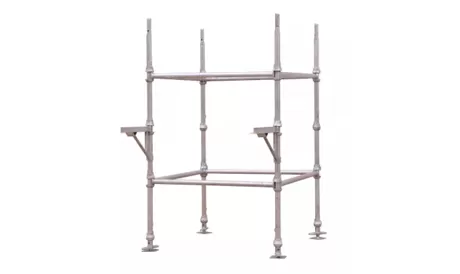
In the fast-evolving world of construction, Scaffolding Solutions have emerged as a game-changing component, addressing significant challenges faced by workers at height. With construction accidents accounting for approximately 34% of fatal workplace injuries (as reported by the Occupational Safety and Health Administration), the implementation of a robust Scaffolding System is paramount. These systems ensure not only the safety of workers but also enhance productivity. Furthermore, the Scaffolding Solutions market is projected to grow by 5.9% annually, signaling a strong demand for effective scaffolding technologies and strategies.

A Scaffolding System refers to a temporary structure used to support a work crew and materials during the construction or repair of buildings and other large structures. This system typically comprises various components including platforms (decks), standards (vertical posts), ledgers (horizontal members), and braces (diagonals). Understanding the functionalities of these components is essential to ensure safe and effective use. For instance, the decking's load capacity can range from 50 to 200 pounds per square foot, depending on the material used—metal, wood, or composite—which significantly influences the stability of the scaffolding.
Scaffolding Systems are pivotal across several industries:
Construction: In residential and commercial buildings, scaffolding provides safe access for workers to elevate heights for tasks such as bricklaying, painting, and roofing.
Maintenance: Essential in the upkeep of bridges, dams, and skyscrapers where workers need to perform inspections or repairs at significant heights.
Entertainment: Used for staging and lighting in concerts and theatrical productions, scaffolding allows for elevated setups without compromising safety.
Industrial: In factories and plants, scaffolding is crucial during equipment maintenance and installation, enabling personnel to perform tasks safely at varying elevations.
The importance of a Scaffolding System cannot be understated, particularly when considering these key advantages:
Enhanced Safety: Proper scaffolding reduces the likelihood of falls, which, according to the Bureau of Labor Statistics, result in over 20% of workplace fatalities.
Increased Efficiency: Workers using scaffolding can perform tasks more efficiently, resulting in a measured productivity increase of 25% due to easier access to elevated areas.
Cost-Effectiveness: Investing in a quality scaffolding solution can lead to a 15% reduction in project time, which is essential in minimizing labor costs.
Versatility: Scaffolding can be quickly assembled or dismantled, making it ideal for varied projects, from small residential jobs to large-scale commercial buildings.
For those interested in implementing a scaffolding system within their construction projects, it is crucial to consult accessible user guides and manuals to understand the best practices for use and safety compliance measures. Consider exploring DYNAST scaffolding products, known for their durability and safety features, which have been rigorously tested in the industry.
Q: What materials are scaffolding systems made from?
A: Scaffolding can be made from wood, steel, or aluminum. Each material has its advantages concerning weight, strength, and cost.
Q: How high can scaffolding systems be constructed?
A: Depending on local regulations, scaffolding can be built to several stories high, with specific designs allowing for heights exceeding 100 feet safely.
Q: Are scaffolding systems reusable?
A: Yes, most scaffolding components are designed for multiple uses, provided they are well maintained and inspected regularly.
For those seeking further understanding or looking to try quality scaffolding solutions, DYNAST offers a diverse range of products tailored to your needs. Begin your exploration today!